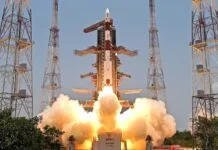introduction
Indian space research nowadays. When you flip the pages of history, Bengal’s name is spelt out in large letters. Yes, this is Bengal, the birthplace of illustrious thinkers, wise elders, and upright citizens. I’ll begin by mentioning the brilliant physicist SK Mitra. At that time, no one in India was familiar with scientists in this manner. Ionospheric sounding via ground-based radio was initially experimented with by scientist SK Mitra in the 1920s in Calcutta. Later, Indian researchers such as “CV Raman” and “Meghnad Sahar” made contributions to space science-related scientific principles.
The Biography of Scientist SK Mitra
Scientist SK Mitra, a scientist, was born in the Konnagar “Hooghly District” of the Bengal Presidency, British India (now West Bengal, India), on October 24, 1890. He was the third child born to Sarathkumari Devi, a Medinipur-born medical student, and Jayakrishna Mitra, a schoolteacher at the time of Mitra’s birth. Although Mitra’s mother’s family belonged to the revolutionary Brahmo Samaj and was well known in Medinipur for their progressive perspective, his father’s family were traditional Hindus.Jayakrishna Mitra joined the Brahmo Samaj in 1878 and, in defiance of her family’s desires, wed his bride.
Due to this, the newlyweds relocated to Medinipur, the hometown of Saratkumari. There, Jayakrishna and his wife had two boys, Satish Kumar and Santosh Kumar, as well as a daughter, before moving their family to Calcutta in 1889, where Jayakrishna later worked as a schoolteacher.The following year, 1890, saw the birth of Shishir Kumar Mitra. Jayakrishna met a number of well-known academics while he was in Calcutta, most notably Ishwar Chandra Vidyasagar and Bipin Chandra Pal. Jayakrishna enrolled his wife as a student at Campbell Medical College because he shared Sarathkumari’s progressive viewpoint.
Saratkumari received a position at the Lady Dufferin Hospital in Bhagalpur, then in the Bengal Presidency (now in Bihar), in 1892 after earning her medical degree. As a result, the family relocated to Bhagalpur, where Saratkumari started her new profession and Jayakrishna was hired as a municipal clerk. Shortly after, Sarat Kumar, the younger brother of Mitra, was born as the third son at Bhagalpur.
His Interest in Atmospheric Scientist SK Mitra
After hearing the legends of Ramachandra Chatterjee, who became the first Indian to fly a single balloon on May 4, 1889, a year before the birth of a Bengali aeronautical ally, he developed an interest in atmospheric science about 1897–1898 when he was six or seven years old.Scientist SK Mitra developed his interest in science during his youth and adolescence by reading widely read scientific publications by eminent Bengali scientists, some of whom included Jagadish Chandra Bose.
Master’s degree with the highest honours in 1912
SK Mitra enrolled in the FA (Intermediate-Level) programme at TNJ College after completing the exam from the Bhagalpur Zilla School; his father Jayakrishna passed away soon after. Mitra enrolled at the Calcutta University Presidency College as a student after passing the FA exam in 1908, where he earned his B.Sc. After earning his master’s degree in 1912 with the highest honours and continuing to pursue his interest for physics and science, Jagdish Bose was appointed as a research scholar. He spent a few months working for Professor Bose before having to stop his studies because of financial issues with his family.
University Study and Research in France
Scientist SK Mitra was hired as a lecturer at TNJ College, the college he attended before leaving Calcutta University to support his family. He was hired as an instructor at Bankura Christian College after only a little time there.SK Mitra focused his frustration at the dearth of research prospects at both schools into creating creative experiments to show his pupils and creating well-known scientific writings in Bengali.
His invitation to return to the University of Calcutta in 1916 as a postgraduate physics scholar in the brand-new University Science College came from Ashutosh Mukherjee. He improved CV Raman’s earlier work on the scattering of monochromatic light in a diagonal single slit and created a more accurate way for figuring out the scattering patterns of heliometers while studying the scattering and interference of light there.SK Mitra was awarded a D.Sc. degree in 1919 for this study, which Raman found to be extremely valuable.
Achieving a second doctorate under Charles Fabry in 1923
He also published three papers in Philosophical Magazine, including one on “Asymmetry of the Illumination Curves in Oblique Diffraction” and another on Arnold Sommerfeld’s method of diffraction. After receiving his doctorate,Scientist SK Mitra moved to France in 1920 to continue his studies at the University of Paris. There he earned a second doctorate under Charles Fabry in 1923, for a thesis on the determination of wavelength values in the 2,000–2,300 Å region of copper.
He later worked briefly under Marie Curie at the Curie Institute. Aware of the constant development of the new science of radio communication, Mitra went to the University of Nancy and joined Camille Guton’s laboratory. Under Gutton, Mitra researched radio valves.
Study of Electron Tubes and Radio Wave Propagation
Scientist SK Mitra wrote to Ashutosh Mukherjee about the growing significance of radio science and the necessity to incorporate it into the postgraduate physics curriculum at Rajabazar Science College, University of Calcutta, before departing for India in late 1923. He was appointed Professor of Physics at Khoira University upon his return to Calcutta. A “wireless” course was added to the Physics M.Sc.
Curriculum in 1924 with Mukherjee’s assistance, and a radio laboratory was set up for the investigation of electron tubes and radio wave propagation.At Calcutta University, he established a brand-new division that eventually developed into the Institute of Radio Physics and Electronics. Arun Kumar Chowdhury was well-known among the students and served as several Ph.D. students’ mentor.
the great Bengal
If we take a closer look, India has actually spent almost 100 years realising its goal of visiting the moon. This period hasn’t changed for the Indian people from 1923 to 2023. For 200 years, the British governed India, and they treated many Indians harshly. But for those who could, foreigners also recognised their abilities and gave them access to the wider world. They may have done it for their own gain, but who doesn’t these days behave in their own best interests? Politicians and socialists in India are robbing the working class day after day. By 2023, India’s science will have advanced significantly since the country’s 1947 declaration of independence.
India is posing many challenges to the world in its own unique way.In a few more decades, India might be even more advanced if corruption in Indian politics didn’t exist. Competent people would take their proper positions, and Bengal’s reputation in Indian science would become even more resounding. A gifted nation like the Bengalis is only approaching its demise because of politics.
Awards Scientist SK Mitra
- Fellow of the Indian National Science Academy (FNI) (1935)
- Member of the Order of the British Empire (MBE) (1938)
- Fellow of the Royal Society (FRS) (1958)
- Padma Bhushan (1962)
-
Fields
Radiophysics
Atmospheric physics -
Institutions
- Bankura Christian College
Rajabazar Science College
University of Paris
University of Nancy
University of Calcutta
Curie Institute (Paris) -
Doctoral advisor
- C.V. Raman
Charles Fabry -
Other academic advisors
- Jagadish Chandra Bose,Marie Curie , Camille Gutton






